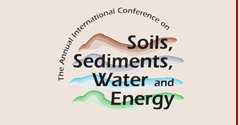Article Title
Technical Challenges On The Marine Hydraulic Dredging Project, New Bedford Harbor Superfund Site
Abstract
Jacobs Engineering Group, Inc. (Jacobs) and Sevenson Environmental Services, Inc. (Sevenson) are conducting remedial activities at the New Bedford Harbor Superfund Site (Site) under contract with the US Army Corps of Engineers (USACE). Funding and oversight for this project is provided by the US Environmental Protection Agency (EPA) through the national Superfund Program. The Site is located in Bristol County, Massachusetts, approximately 55 miles south of Boston. Contamination at the Site consists of marine sediments impacted by polychlorinated biphenyls (PCBs) and heavy metals from industrial activities adjacent to the shoreline. The selected remedial alternative for the Site involves hydraulic dredging for removal of the PCB-impacted sediment. Following removal, the remedy includes sand separation, sediment dewatering, wastewater treatment, and sediment transportation to an off-site disposal facility. In 2004 and 2005, the Team (Jacobs, Sevenson, USACE and EPA) solved a number of technical challenges related to dredging in this unique marine setting. Upon initiation of dredging in 2004, hydrogen sulfide (H2S) gas at concentrations exceeding OSHA’s current permissible exposure levels, was immediately released from the marine sediments into an enclosed treatment facility. The elevated H2S concentrations were mitigated through engineering controls consisting of chemical treatment and local exhaust ventilation to carbon treatment. Ferric sulfate (Fe2(SO4)3) was injected into the dredge slurry to reduce or eliminate H2S by precipitating ferric sulfide (FeS). A high volume air extraction system was installed to capture any un-reacted H2S. A second challenge involved maintaining the required dredge production despite the presence of debris embedded in the sediment. To overcome this challenge, unique equipment was designed to remove the debris while maintaining the low water column turbidity thresholds established for environmental protection. A third challenge presented to the Team was the accurate monitoring of the vertical and horizontal progress of the dredging in the shallow tidal marine setting. This was accomplished by using a combination of tools, including a Global Positioning System (GPS), laser level soundings, and acoustic bathymetric surveys. Resolving these technical challenges allowed the Team to reduce the risk of personal injury and increase overall productivity. The lessons learned on the New Bedford dredging program can be applied to other freshwater and marine dredging environments where success is measured not only in sediment removal rates per day, but in worker safety metrics and process quality control.
Recommended Citation
Gaynor, Kenneth C.; Roberts, Caroline S.; Wilsom, Carl L.; Fox, Steven; and Driscoll, Terence P.
(2010)
"Technical Challenges On The Marine Hydraulic Dredging Project, New Bedford Harbor Superfund Site,"
Proceedings of the Annual International Conference on Soils, Sediments, Water and Energy: Vol. 12, Article 25.
Available at:
https://scholarworks.umass.edu/soilsproceedings/vol12/iss1/25
